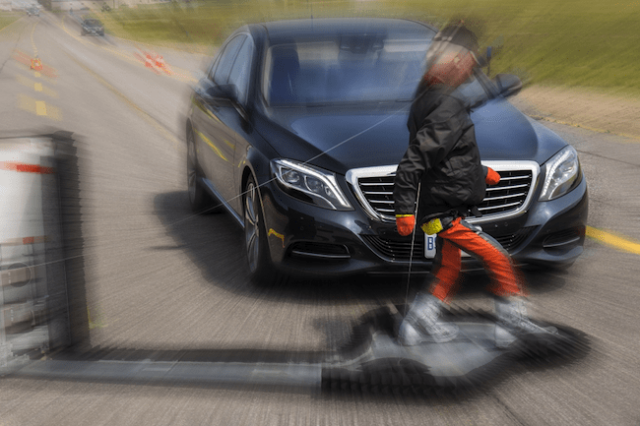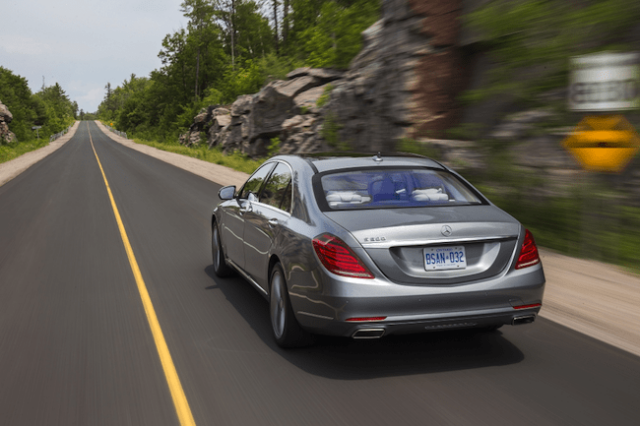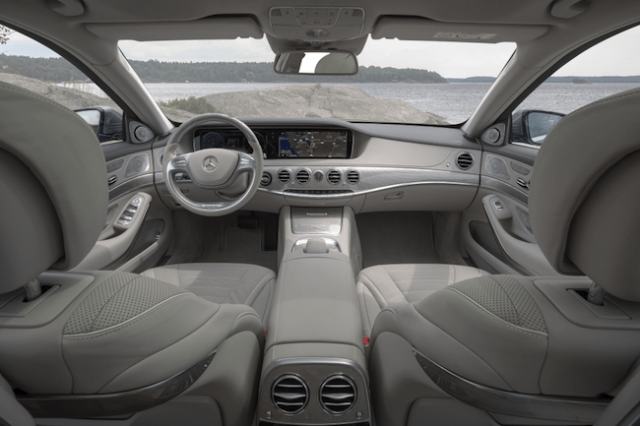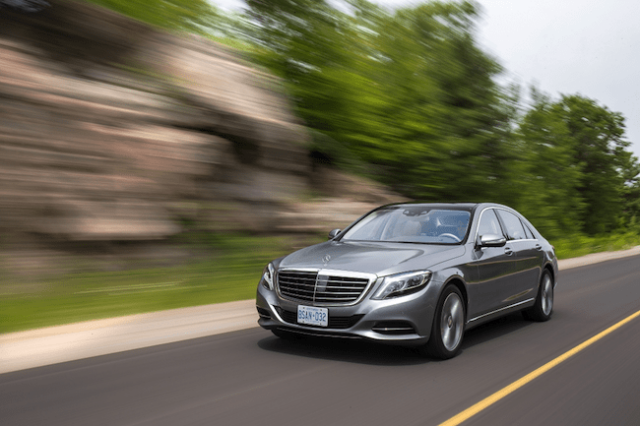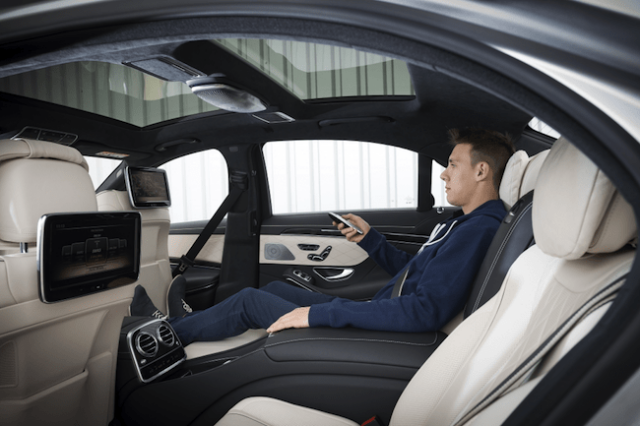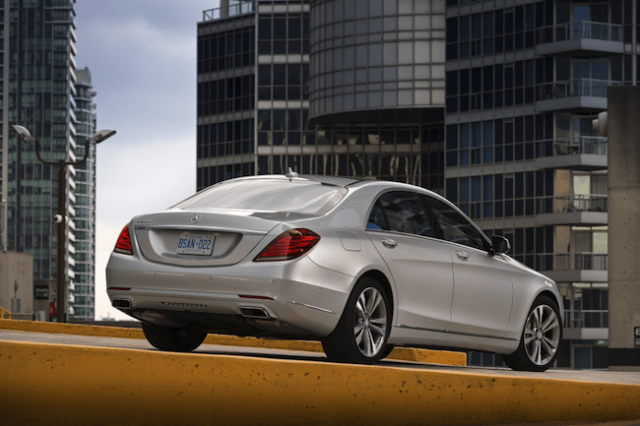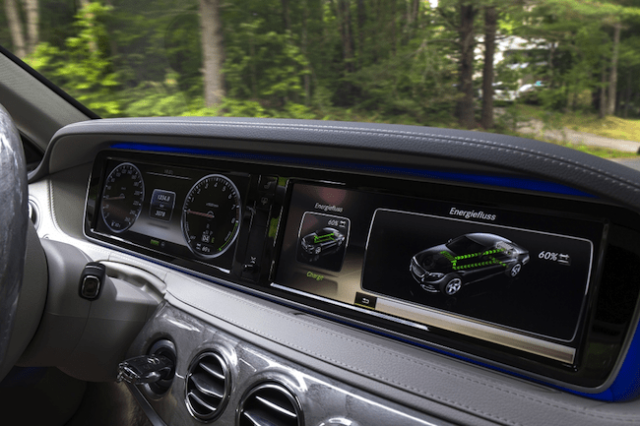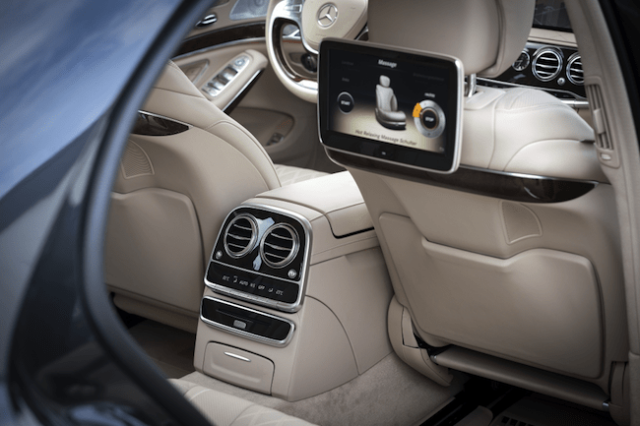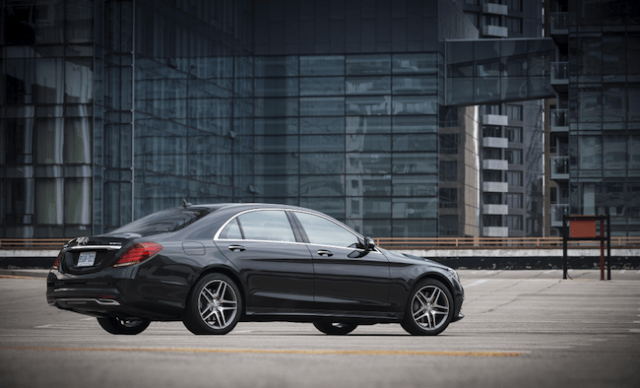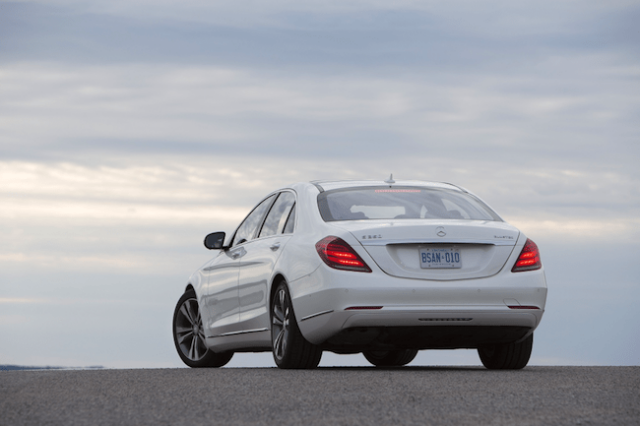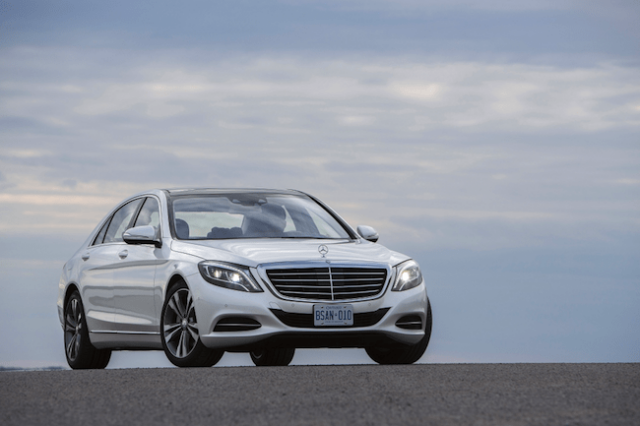Gravenhurst, ON — Eight days after taking part in the global launch event for the 2014 Mercedes-Benz S-Class in cottage country north of Toronto, I was driving a 2003 Chrysler PT Cruiser Turbo in precisely the same part of the world.
No, this is not a comparison test. A comparison test would make little sense. There is, in fact, very little that these two vehicles have in common—apart from the blatantly obvious (an internal combustion engine, four wheels, windshield wipers…you get the picture).
The latest S-Class is aimed at a very different customer. They two cars also have different purposes. They were built by different companies in different cities at different times using different materials and different manufacturing processes.
Different.
But the experience of driving these two cars within eight days of each other produced a very interesting parallel. During the PT Cruiser drive—which, it should go without saying, was not part of a press event—the car began to drive by itself. Now, to be clear, back in 2003, cars were not able to do this; to be even more clear, cars built then weren’t supposed to do this.

A 2.4L under the hood
Yet, as I began to see what a 2.4-litre turbocharged engine with some 190K on the dial was capable of, the thing went into “unintended overboost” mode. I backed off the accelerator right away, but the engine just kept churning. Switching into low didn’t provide much in the way of a speed reduction and the decidedly tired brakes weren’t up to the challenge either.
(For the record, the PT Cruiser Turbo, also known as the GT Cruiser, employed the same engine as the Dodge Neon SRT4, so it was no slouch: the 215 horsepower and 245 lb-ft of torque made sure of that.)
Finally, with an occupied railroad crossing looming in the near distance, I popped the chrome gearshift lever into neutral, listened as the engine roared in protest and then heard a big ‘POP!’ as a hose blew off the turbocharger. The PTCT returned back to earth—mercifully.
The drama was over, but the feelings lingered, the main one being: A car that drives itself may be just dandy, but a car that unexpectedly drives itself is not nearly as desirable.

In the interests of absolute fairness, I experienced nothing close to this level of terror while driving the new S-Class. In fact, the entire experience of piloting Mercedes’ latest and greatest flagship from the gritty streets of downtown Toronto to the vast expanses of green in Muskoka was a completely relaxed and largely effortless affair.
Part of the reason why: The new S-Class has 20 driver assistance systems, including those designed to automatically keep the car in its lane, follow the car ahead while rounding corners and come to a full stop when video cameras detect someone or something crossing the road.
Some of this might seem like old news, but it was the degree to which the S-Class is is capable of controlling the situation that caught my attention. At dinner the night before the event, one of the Mercedes-Benz engineers responsible for said systems described the S-Class as “opening the door to autonomous driving.”
Reading between the lines, this means that the only things standing between this Mercedes operating on autopilot 100% of the time are: a) local legislation and b) selling the general public on the idea of being chauffeured around by computers.

Ground zero for testing out all these many advances was Muskoka Airport, a lightly used set of wide-open runways In Gravenhurst. It was here that we rode along as the S-Class parallel-parked itself expertly, then followed up that trick with an equally well-measured, “non-parallel” parking job.
In another area of the airport, we witnessed firsthand as the car’s active cruise control, called DISTRONIC PLUS, followed a moving car and reacted automatically when that car stopped moving. We then saw the S-Class brake itself from 60 km/h when a dummy on a mechanical arm, mimicking a pedestrian, crossed the road in front of us.
It was all very impressive; all the systems worked to perfection.
Taking a step or two back, though, under our own steam during the drive north, we were less successful in working with the lane departure system. This technology has been improved significantly since Mercedes’ previous effort—now, the system can also intervene if it detects a car approaching from the opposite lane.
We didn’t experiment with that particular enhancement—too chicken to play that game of chicken—but we did veer onto the shoulder of the road at regular intervals to make sure the technology was watching over us.

Unfortunately, as per every other lane departure system I’ve ever sampled from every car manufacturer, most of the time it corrected the car’s direction, but sometimes it didn’t. I can’t explain why this happened and the engineers at Mercedes couldn’t either.
It’s possible that the shoulder was used so much. It’s possible that the angle with which the car crossed the line delineating the shoulder was too sharp. It’s possible that the move was too quick. It’s possible that the car was travelling too quickly. All of these things are possible.
More likely than not, the common denominator in all these experiences—read: me—was the weak link in the system(s). But here’s the thing: There’s a grey area between where these highly advanced systems leave off and where the driver needs to step in. And, as per my earlier note about the rampaging PT Cruiser, when a car does something that is entirely unexpected, it can be a very scary prospect.
Without a doubt, the autonomous car is coming very quickly. The technology is there; it’s just a matter of fine-tuning. I don’t have a problem with that; I like trains, I ride the subway. But this period we’re in right now, this era when the car can handle some of the driving and the driver needs to handle the rest, is fraught with uncertainty.

In the press kit, Mercedes-Benz has alluded to the new S-Class as being “the best car in the world.” Their new flagship is certainly comfortable and luxurious and technologically advanced, there’s no question about that. I dare say it still leaves something to be desired in terms of driving dynamics, particularly when compared against, say, the Audi A8 and the BMW 7 Series.
But when you’re stretching out in the expansive back seat of the long wheelbase version, enjoying the hot stone massage feature of the seats and working away on a very trick folding table, driving dynamics don’t really figure very prominently. The only thing missing from the experience is someone to take care of the driving duties… unless, of course, the car can handle the driving duties all by itself.
Interior and exterior 2014 Mercedes-Benz S-Class pictures
